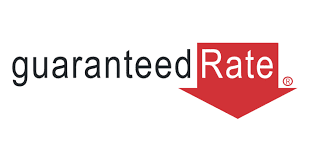Lender LendingTree rating and “best of” category Lender review


Refinance loansRead our review


VA loansRead our review


Jumbo loansRead our review


Online mortgage experienceRead our review


FHA loansRead our review


Home equity loansRead our review


Mortgage loan varietyRead our review
![]() Learn more about how we chose our list of the best mortgage lenders.
Learn more about how we chose our list of the best mortgage lenders.
The laws around buying a home and dividing up property vary by state. Before you move forward in buying a home, take a moment to review Montana’s laws.
If you are buying a home directly from an owner, keep in mind that sellers are not required to complete any formal disclosure forms other than the federally required lead disclosure and a mold disclosure if they know about the presence of mold. In other words, Montana is a caveat emptor (buyer beware) state, meaning courts typically won’t award damages to buyers who discover defects after purchasing. Real estate agents and brokers are required to disclose any material defects associated with the property, though.
Once you’ve found — and carefully inspected — a home and secured your financing, you’ll need to close on your home. Montana is an escrow state, which means that an attorney is not required to be present at closing. In Montana, escrow agents are licensed by the state’s Division of Banking and Financial Institutions. Attorneys and licensed accountants and mortgage brokers can also serve as escrow agents without getting licensed as an escrow agent.
If you are unable to keep up with your mortgage payments, you could be subject to foreclosure. Technically, Montana allows both judicial and nonjudicial foreclosures. In a judicial foreclosure, the lender files a lawsuit to foreclose. In a nonjudicial foreclosure, the lender must follow state procedures, but they do not have to go to court. However, most residential foreclosures in Montana are nonjudicial because they fall under the Small Tract Financing Act of Montana, which applies to properties of less than 40 acres. In nonjudicial foreclosures, you can’t be sued if the house fails to sell for enough to pay off your mortgage balance.
In the event of a divorce, Montana is an equitable distribution state. This means that the court divides a couple’s property “equitably,” which is not necessarily 50/50. The court takes into account the monetary and nonmonetary contributions of each partner, the employability of each partner and who is caring for any children, along with other factors.
Montana has no real estate transfer tax (a tax paid in many states whenever real estate is sold); it is one of just 13 states that does not have a real estate transfer tax.
When it comes to real estate taxes, Montana has some of the lowest tax rates in the country. In fact, it’s ranked 29th in the nation in terms of the average amount of property taxes collected. It has no statewide property tax; instead, property taxes are determined at the county level. The median property tax bill in the state is $1,465 per year on a home worth the median value of $176,300.
Montana also offers several programs to help residents with their property taxes. The Property Tax Assistance Program reduces the property taxes of low-income or fixed-income residents, while the Montana Disabled Veterans Assistance Program helps disabled veterans and their unmarried surviving spouses with their property taxes. The state also has a program to assist homeowners who have experienced a natural disaster.
For 2019, the conforming loan limit across Montana is $484,350. Although allowances are made for high-cost areas, all counties in Montana adhere to this limit.
A conforming loan is a loan that is eligible for purchase by Freddie Mac and Fannie Mae, two government-sponsored entities designed to stabilize the housing market. These loans have limits, which are adjusted each year based on the average price of a home in the U.S.

Montana offers several programs to help homebuyers secure the home of their dreams in Big Sky Country.
With this program, Montana Housing provides a 30-year, fixed-rate mortgage and pays 1% of the origination fee for federally guaranteed loans.
Who qualifies:
This program for qualified military veterans offers a 30-year, fixed-rate mortgage at 1% lower than the market rate. The maximum loan amount is $269,180. There are no income or purchase price limits.
Who qualifies:
This program offers a 30-year, fixed-rate mortgage to those with a permanent disability and their family members.
Who qualifies:
Board of Investments Residential Mortgages offers a variety of mortgages, including 15-, 20- and 30-year term loans. There are no income limits.
Who qualifies:
This program offers a first mortgage for 80% of the purchase price and a second mortgage for the remaining 20% to those who qualify. This allows borrowers to avoid paying for private mortgage insurance.
Who qualifies:
The Score Advantage program provides up to $6,500 as a second mortgage to help cover a down payment.
Who qualifies:
This program offers a second mortgage of up to $6,500 to qualified homebuyers. No payments are due until the home is sold, transferred or refinanced.
Who qualifies:
This second mortgage program helps borrowers put down a larger down payment, which allows you to get a mortgage without having to pay for private mortgage insurance. You must work with a lender within the NeighborWorks network to qualify. The minimum loan amount is $10,000.
Who qualifies:
This program offers no-interest second mortgages to many Montana residents, and you can work with any lender who has an office in Montana. (Notably, this program is not available to those living in Billings, Great Falls or Missoula or in the following counties: Gallatin, Meagher, Mineral, Missoula, Park and Ravalli.) The minimum loan amount is $2,500 and the maximum is $25,000 ($40,000 if you have a disabled family member or if you live in Carbon or Flathead counties, or in the city of Red Lodge).
Who qualifies:
This program is designed to assist borrowers with closing costs. Loans range from $1,500 to $10,000, and the loan terms are 15 or 30 years, depending on your level of income.
Who qualifies: